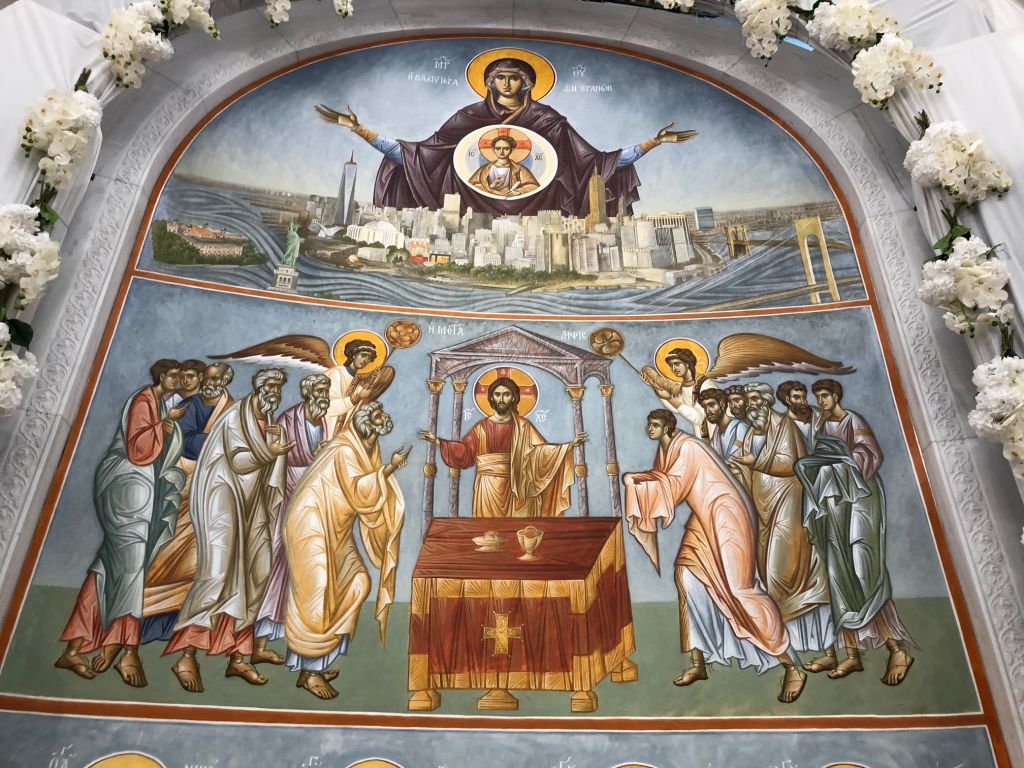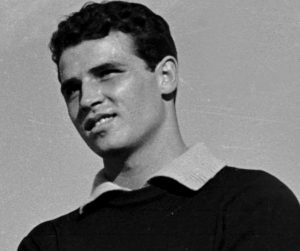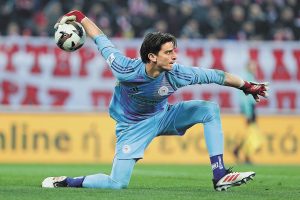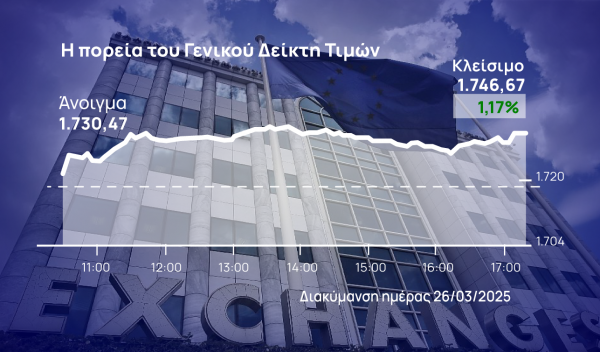By George Gilson
At first blush the contrast between Mount Athos, the 1,000-year-old Greek Orthodox monastic colony that is an ark of Orthodox spirituality, and the Twin Towers and their tragic destruction, seems immense. Indeed the very pairing seems inconceivable.
Yet, the two sites became inextricably linked when former Archbishop Demetrios of America picked Father Loukas of Xenophontos Monastery of Mount Athos to do the iconography at the Saint Nicholas Greek Orthodox Church and National Shrine at Ground Zero.
The architectural design of the splendid edifice is inspired by the Cathedral of Hagia Sophia of Constantinople, and the dome that towers over most of the church, with the same number of ribs as the dome of what was once the greatest Cathedral of Christendom, bears witness to the fact that this was precisely the intention of world-renowned architect Santiago Calatrava, who covered the exterior in Pentelic marble, going to the same quarry from which the marble for the construction of the Parthenon was mined.
Some would like to view the new church as a spiritual Parthenon, a symbol of wisdom and freedom at a sacred site of tragedy.
The tumultuous history of the church’s construction
It was the great organisational skills and determination of Archbishop Elpidophoros and the enormous contribution of the unparalleled experience and fundraising skills of Father Alex Karloutsos, who has known eight US presidents and on 7 July was awarded the Presidential Medal of Freedom by President Joe Biden, that led to finishing the project, the completion of which had fallen in doubt, with a whopping $55mn reportedly collected after January, 2020.
Demetrios’ choice of Calatrava was a key reason, but not the only one, that the original $20mn budget gradually skyrocketed to $95mn.
The project being was halted in December, 2017, when the Skanska USA construction company announced that it was not being paid by the Archdiocese, and it languished for years, with Greek Orthodox faithful from all over the US who had made contributions large and small expressing strong consternation and wondering if it will ever be completed.
The same question bedeviled New York Governor Andrew Cuomo, who strongly pressured the Greek Orthodox Archdiocese of America to get the job done and helped enlist rich donors, such as billionaire developer and Gristedes supermarket chain owner John Catsimatides, so that construction could restart and be completed.
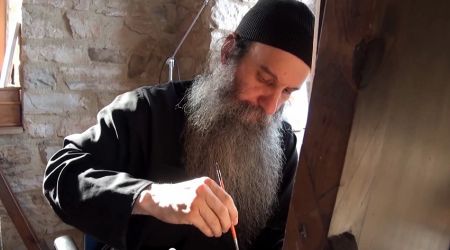
Mount Athos iconographer Father Loukas of Xenophontos Monastery
An icon of the Resurrection, Archbishop Demetrios, and Father Loukas
If the dazzling architecture of the church followed a strictly Byzantine model, the interior iconography by an Athonite monk, the famed Father Loukas of Xenophontos Monastery, combined his distinctive but traditional Byzantine style with key departures from tradition.
Loukas was chosen by Demetrios after having been impressed by an icon of the Resurrection of Christ that he had ordered, and in a somewhat mysterious way that foreshadowed the resurrection after the crucifixion of the 9/11 disaster, symbolised by the construction of a Greek Orthodox Church. After all, it is Easter, and not Christmas, that is the paramount feast day of the Eastern Orthodox Church, and the Church of Saint Nicholas directly symbolises the victory of love and life over hatred and death.
New York City under the Platytera, Virgin Mary mural
Father Loukas was asked by the Greek Orthodox Archdiocese to include at the base of the Platytera, the depiction of the Virgin Mary with the Christ child on her lap in the apse above the altar of all Orthodox Churches, key NYC monuments and sites, and in another mural to depict the attack against the Twin Towers, which he combined with a depiction of Saint Nicholas, the protector of seamen, saving a drowning sailor.
Born in Larissa, the capital of Thessaly, the 58-year-old monk began studies in the department of mathematics at the Aristotle University of Thessaloniki, but left university to follow his religious calling.
In an exclusive interview, he describes his artistic path in iconography, his sentiments when he first heard about the terrorist attack against the Twin Towers and when he later visited the site, his distinctive colours and artistic style which is a mixture of different schools of Byzantine iconography, and how he accepted the challenge of doing the iconography at a church-shrine that will serve as a place of prayer for visitors of all denominations.
How did you first become involved in the iconography of the Saint Nicholas Church at Ground Zero?
I became acquainted with former Archbishop Demetrios when I had painted an icon of the Resurrection (Descent into Hades in Byzantine iconography) for him and that’s where it started. He ordered it through a priest, Father Aristedes Garinis, who was his spiritual child in New York and was studying iconography with us. Then we met in 2012 at the inauguration of the Cathedral of the Resurrection in Tirana, Albania. That’s when he asked me if I would be interested in doing the iconography of the Saint Nicholas Church and National Shrine in Manhattan.
Do you recall your reaction, your emotions when you learned of the 9/11 strikes on the World Trade Centre when they occurred?
I remember it very well. When we learned of this event I was surprised and shocked. I asked myself, what will happen from hereon in as regards world peace. I thought it will trigger negative developments as regards the general situation in the world, and indeed things took a different course internationally. For Greece and the whole world I viewed it with great fear.
Then we saw that after the attack Archbishop Demetrios went to Ground Zero and offered the Trisagion prayers for the dead, and I was very glad that the Orthodox Church took this initiative.
I never could have imagined that somehow I would become linked to this event, but I saw it positively that the Church in America was taking this initiative.
Did you start the iconography with the movable wooden icons of the altar screen?
Yes, I went to New York once and we agreed on a plan for the church’s iconography, and along with the altar’s icons we began to paint the wall mural iconography as well.
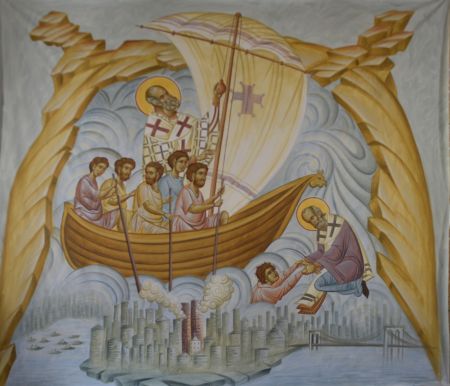
Saint Nicholas saving a sailor, with Twin Towers burning in view of lower Manhattan
What did that mural plain entail?
It was focused on the New Testament and the life of Christ, the twelve major feast days called the dodekaorton. It was not focused on the life of Saint Nicholas. It was centred on the life of Christ. We did a bit over half of the icons at that time. The church is in the form of a square that is the base of a large dome [very similar in form to that of Hagia Sophia of Constantinople].
The lovely Platytera (the Virgin Mary with the Christ child on her lap behind and above the altar in Orthodox churches) incorporates various elements from New York City. Tell us about that, how did you conceive of it.
The concept was given to me by the archdiocese. Bishop Ioakeim of Amisos, w told me they wanted to combine some images of NYC beneath the image of the Platytera. He wanted to include some important buildings like the United Nations headquarters, the Brooklyn Bridge, and the building that was constructed at Ground Zero.
We included the Twin Towers in another painting from the life of Saint Nicholas, where he saves a sailor [he is the protector of sailors in Eastern Orthodoxy]. In the waves of the sea, in a painting in the rear side of the church, I depicted the moment of the strikes against the towers. The sailor is symbolic of the general salvation of humanity, of afflicted or embattled people. I also depicted Ellis Island.
Within the strictures of Byzantine iconography, one sees that you try to fit in your own personal expression. How would you describe that process?
A key element is the colour palette. Each person likes certain colours, and a certain sense in the overall image of iconography. This is not an issue of tradition, but rather a personal matter, how you can give a particular sense of colour when one enters a space. What I want to prevail in a church is the avoidance of intense colours that are jarring for the viewer and thus effectively overshadow the scenes depicted. I want everything in the iconography of a church to be almost barely noticeable and not to impact harshly on people. I don’t want to over-emphasise the contours or to have great colour contrasts, in order to achieve a mild sense in the imagery.
When did your path in iconography begin and how did you learn the art?
I started icon painting around 1980. At first one places many photographs of older prototypes of icons that one uses as models, maybe even 20, around the piece one will paint, in order to take elements from each. Gradually the 20 become 10, then five and then one. At some point we discard even the one, because by that time we have internalised all that material, which is ready to become processed on its own within us, without being based on pictures.
Might one say that you settled on a mixture of the Cretan and Macedonian schools of Byzantine art?
Certainly. As you say, it is a mixture. That is part of the process of internalising prototypes from various schools in order to create something more personal.
Which is your most beloved school of iconography?
The Palaeologian period [when there was an artistic flowering before the Fall of Byzantium, with a prime example being the Chora Monastery of Constantiople, with its splendid mosaics and frescoes, which has been turned into a mosque under the current regime.] In that period Byzantine art produced the very best that it had to offer. It is not just the art, but the theology of that period, with Saint Gregory Palamas [A Mount Athos monk who later became Archbishop of Thessaloniki. He was a proponent of hesychasm, which saw the possibility of coming closer to God through the divine quietness of perpetual prayer, and the battle over it caused a theological uproar in the empire, one of many divisions just one century before the fall of the Byzantine Empire, to which they contributed].
The theology of the era is evident in its iconography, as in the church the Protato [the cathedral in Mount Athos’ capital of Karyes with the unsurpassed fresco murals painted by the unsurpassed master of the Macedonian School, Manouil Panselinos]. In his mural of the Transfiguration of Christ, one sees the internal, spiritual, dark glory that is at the core of the writings of Saint Gregory the Theologian [who wrote that this divine quietness and perpetual prayer leads one to the “uncreated light” of God that appeared during Christ’s Transfiguration, revealing his divine nature, on Mount Tabor].
What is the uncreated light for you?
The uncreated light is something from God, for me and Orthodoxy more generally. That is our aim – to reach the uncreated light. It is not just something seen by the eyes. It is something which human beings live in their entirely, body and soul. It is the energies of God as manifested in the world. It is that which man can comprehend about God.
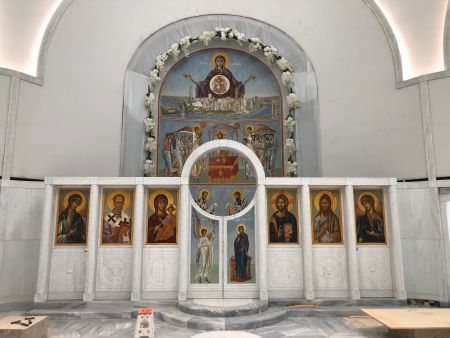
Saint Nicholas Church-National Shrine altar
The theology of icons
The theology of the icon, however, came earlier. It is something which enables us to build our relationship with God. It is a tool. Why did the iconoclasts [in a protracted war over whether icons should be allowed in churches or were idolatrous] battle icons? Because they said, as did the Old Testament, that God and the divine cannot be depicted. Why do you depict God? Those who supported the creation of icons said we depict God because God became man, through Jesus Christ. Therefore, I can depict him and indeed receive a foretaste the body and blood of Christ. It is palpable, and so I have a direct relationship with God.
In painting the murals of Saint Nicholas with images of New York City and the 9/11 disaster, you naturally transcended Byzantine iconographical types. In your work overall, how do you attempt to include a personal artistic touch, as popular iconographers have done over the centuries in the post-Byzantine era? Is there something “modern” in your work?
I think it is both the colour palette as we said but also the choice of the subject matter. When one has painted Byzantine iconography for years, one begins to create certain differentiations of one’s own, going somewhere that departs somewhat from the prototypes and starts becoming in a way personal.
How many times have you visited Ground Zero?
I visited three times. The first time was in 2016 under Archbishop Demetrios. The second was when the enthronement of Archbishop Elpidophoros occurred, in 2019, and then again in 2020, when I went to discuss the iconographic plan. We held a conference at the church to discuss the details of the iconographic plan. My last visit was recently, when Archbishop Elpidophoros consecrated the church.
What were Archbishop Elpidophoros’ ideas on how to approach the project?
He wanted it to link, in a wise manner, the World Trade Centre disaster with the building and role of the church. Bishop Ioakeim of Amissos, who has studied Byzantine art, said that in the Platytera there should be references to New York City, and that in another part of the church he wanted a depiction of the man saved by Saint Nicholas. In the depiction of the Resurrection [the Descent into Hades when Christ resurrects humanity] there would be certain people in uniform [policemen, firemen, emergency services, etc.] who helped save the survivors.
When did you first meet Archbishop Elpidophoros and what were your first impressions?
It was at least 15 years ago when he was a deacon at the Patriarchate. I saw that he was a very methodical and practical person. He sets targets and achieves them. He is a person with whom you can easily discuss things. He is a person with whom anyone from any walk of life can speak and come to an understanding. There is a certain directness and immediacy when you speak with him. He has a gift of communication.
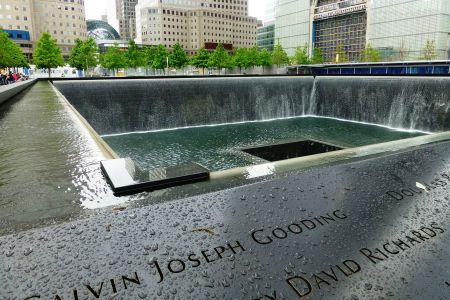
9/11 Memorial
When you first visited the Ground Zero site, what were your emotions?
On the one hand, I experienced a tragicness of humanity. I felt that humanity at the pinnacle of its glory is drowning. New York is a symbol of contemporary civilisation, and you have a strike in which so many people are killed. You think couldn’t these people have been spared, and yet it happened. The Twin Tower were destroyed, and at that moment we see a tragic situation of our civilisation. That is what at first shocked me, that humankind is so weak and small in the face of tragic events.
Did you pray?
Of course. When you see the names of these people on the 9/11 memorial, you sense the reality, and people were killed on the ground on which we step there. It is shocking.
With all that in mind, what are your thoughts about the future of humanity?
I truly feel that the future of humanity is dark. Especially now, with the war in Ukraine, we see that humanity, while it had proceeded and achieved a certain cultural ascent, at this moment is experiencing a tragicness. That war was not necessary. Even as scientific and technological civilisation advances, we see in all of humanity a spiritual caving in. The current war came along and simply illustrated that in a particular way and made it totally glaring. It tells us, look, things have become very tragic. When someone [Putin] believes he has become very strong, he behaves in this manner. He wants to impose his supposed omnipotence. It is what the ancient Greeks called hubris.
